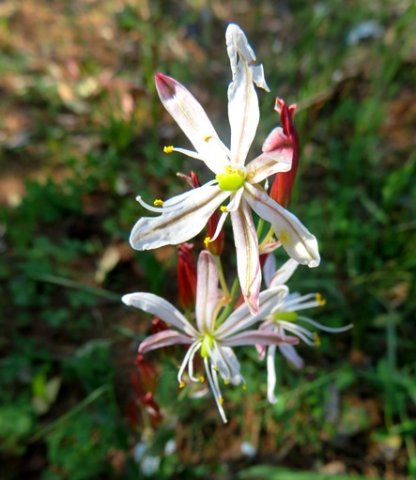Trachyandra

Author: Ivan Lätti
Photographer: Thabo Maphisa
Trachyandra is an Asphodelaceae genus of rhizomatous geophytes, tuberous perennials or shrublets. The roots are wiry or swollen.
The leaves are succulent or leathery, growing in rosettes or fans and alternating when occurring on the stems. Leaves often have tubular sheaths at the base, papery or membranous. The leaves are strap-shaped, terete or channelled, long and narrow, many or few.
The inflorescence is a simple raceme or branched into a panicle, the scape usually naked. The six-tepalled flowers spread star-like or are reflexed, the flowers erect or pendulous. Flowers mostly open in the afternoon, not lasting more than a day each. The pedicel has a single bract at its base, not more than one flower per bract. The tepals are usually white, sometimes pinkish, even yellow or mauve. There is a dark tepal keel and usually paired, yellow spots near the base.
The stamens have rough-surfaced filaments. The superior ovary has two to sixteen ovules per locule. The fruit is a rounded capsule, the seeds grey or brown.
There are about 50 species, all but one occurring in southern Africa. The majority of trachyandras grow in the winter rainfall region of the Western Cape.
The young flower spikes of some species are well-known as a vegetable dish known as Cape spinach or veldkool (veld cabbage).
The specific name of the plant in picture is unknown, its strap-shaped leaves coiled. The photo was taken in the Biedouw Valley during September (Leistner, (Ed.), 2000; Manning, 2007; iNaturalist).

